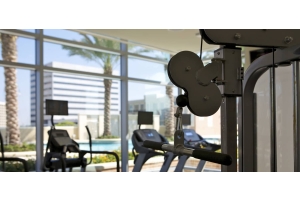Strength Training Exercises For Runners

Why Do You Need To Strength Train?
As a runner you probably put the miles in each week but why should you also build up your strength? Basically it will help to prevent injury, may also improve your efficiency as a runner and also improve your running economy.
Leg Strength Exercises
For runners it is important to focus on single leg exercises. This is because as a runner you only have one foot on the ground at any given time. So single leg exercises best reflect what you will be doing when running. But also it will help you to build two equally strong legs. The truth is that when you exercise on two legs the stronger leg will do more of the work. When you are starting single leg exercises try to start with your weaker leg. Exercises to focus on include:
The Single Leg Deadlift
Holding a kettlebell in one hand, stand on the leg on the same side and bend at the hip extending your free leg behind you
Pistol squat
Lift one foot off the floor, put your arms in front of you. Lower yourself into a squat so that your lifted leg is straight out in front of you.
Single Leg Press
This is an exercise machine exercise. Plant one foot on the platform and fully extend the knee then return to the starting position
+ Check out our dumbbell range
Exercises With Barbells
These exercises help to build strength in the hips, quads, hamstrings and glutes. All critical muscle groups for runners. The hips in particular are very important when running as they will help to create a consistent cadence. Exercises here include:
The Deadlift
With feet shoulder width apart bend at the hip, so you grip the bar at shoulder width. Lower your hips and flex the knees until your shins contact the bar. Keeping your chest up move the weight upwards, as you pass the knees pull the bar back and then lower the bar.
Front Squat
Hold the barbell just below shoulder height, your feet should be shoulder width apart, descend into the squat then drive back up through your heels.
Back Squat
Supporting the barbell on the top of the traps, keep your back straight and head up descend then drive the weight back upwards.
+ Check out our barbells
Plyometric Exercises
You may also think of plyometric as jump training. Essentially plyometric is all about jumping and or hopping but crucial to it is the understanding that a concentric muscle contraction (take off phase) is much stronger if it immediately follows an eccentric contraction (landing phase) of the same muscle. Plyometric exercises are all about explosive actions and they are really good at building power. Why is that important in running? Well because it will make you a more efficient runner particularly building efficient strides. Exercises that can be good for runners include:
Jump Squat
Lower into a squat and then jump into the air and land back in the squat.
Single Leg Jump Squat
Squat down on one leg and then jump up and then on the leg you went down on.
Alternating Jump Lunges
Lower into a lunge, jump up and switch your legs in midair so that you land with your opposite leg forward.
Box Jumps
Stand in front of a plyo box keeping your feet shoulder width apart squat down and then jump up onto the box landing in squat. Step down between reps.
+ Check out our plyometric boxes
Medicine Ball Slams
Hold the medicine ball with both hands over your head, then slam the ball down towards the ground as fast as you can
If you are a beginner to plyometric then start with squats and lunges and then add a jump. It is really important to also know how to land properly, ie landing on the balls of your feet with your shoulders, knees and toes aligned and knees slightly bent to absorb the impact.
+ Check out our medicine balls
A Strong Core
A strong core is essential in a runner as it helps with your running efficiency. The best way to think about it is that a strong core sets the foundation for the strength in your arms and legs which all stem from your core. If you run with a strong core your pelvis, hips and lower back create a smooth movement. So good core exercises include:
Forearm Plank
Lay on the floor then raise your body up keeping forearms on the floor and your body in a straight line. Keep those abs engaged and try not to let your hips rise or dip.
Side Plank
Lay on your side place your feet together and on top of each other. Prop yourself up on one elbow and forearm. Raise your hips so that your body is in a straight line.
Bicycle Crunch
Lay on the floor on your back with your hands behind your head. Crunch up so that your left elbow touches your right knee, whilst you stretch out your left leg. Then alternate.
Dead Bug
Lay on your back with your hands extended towards the celling. Your feet knees and hips should be up at 90 degrees. Strengthen one leg down to the floor, hovering it just above the floor and then alternate to other leg.



